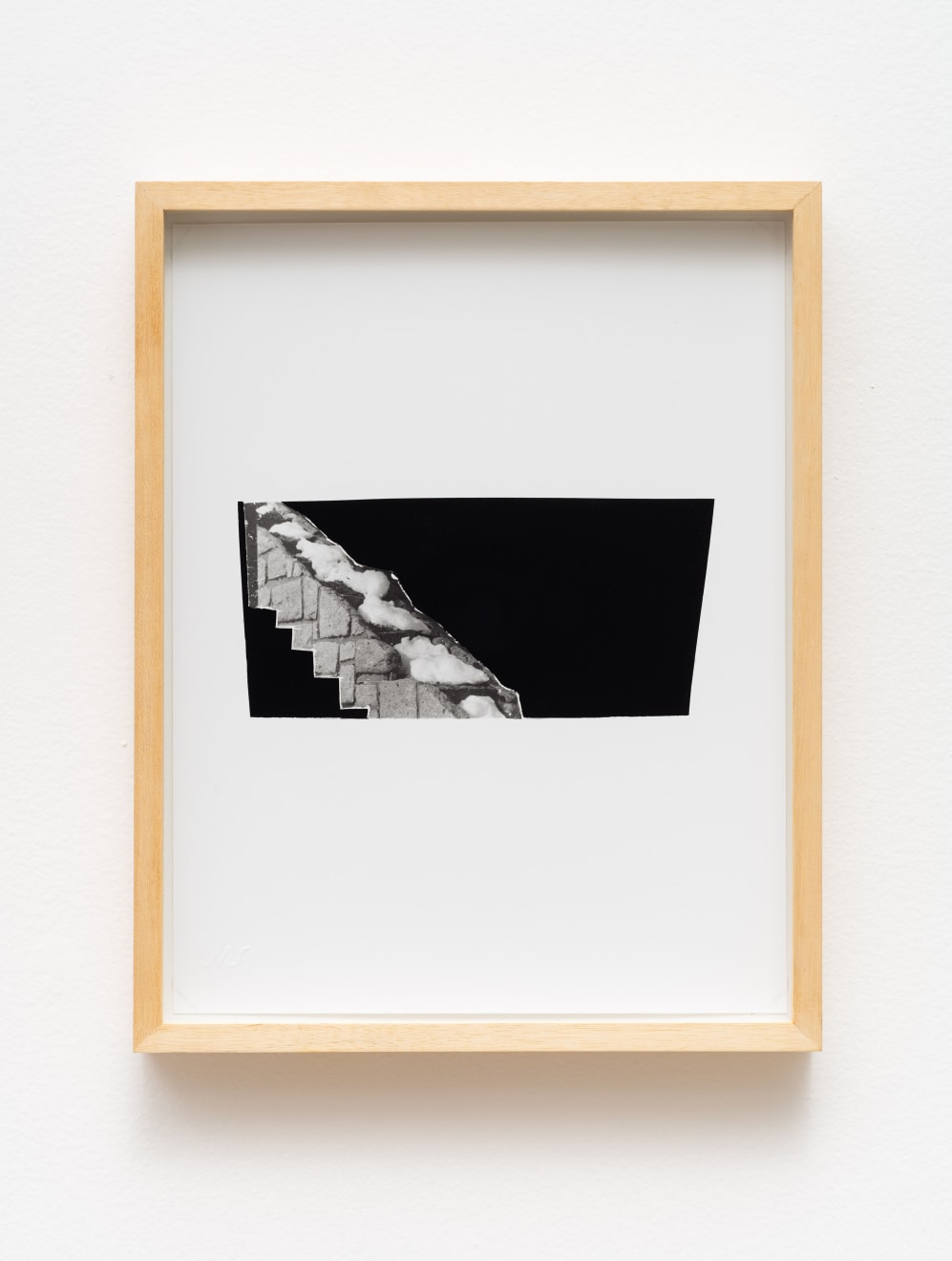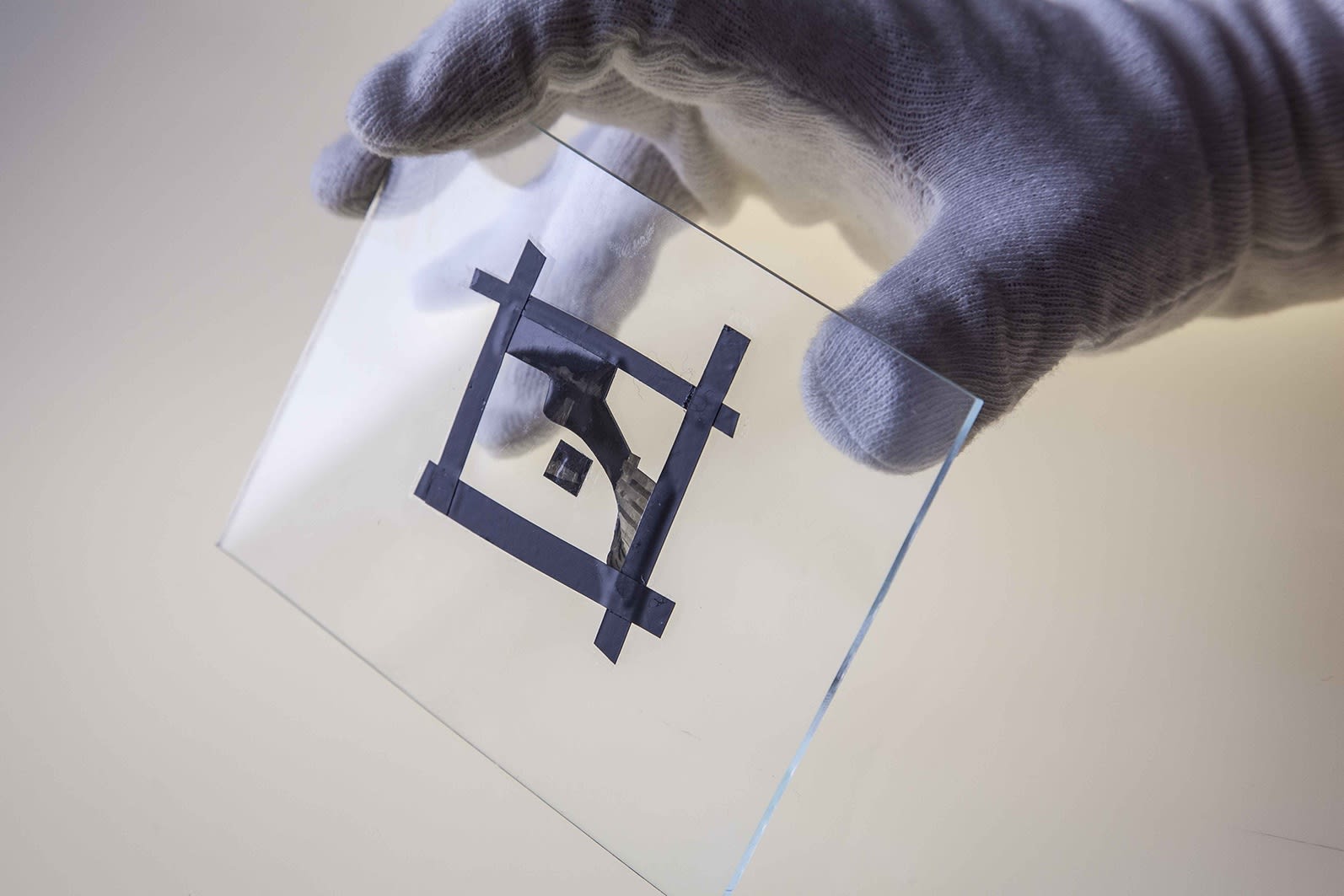-
Artworks
Open a larger version of the following image in a popup:
Negativos recortados e colados em placa de vidro 9 x 12 cm, novas matrizes para fotografia da série Sobras. Coleção Fabiana de Barros/Comodato Instituto Moreira Salles. Fotografia : Ruy Teixeira.
Geraldo de Barros
“Sobras”, 1996-1998/2024fotografia em gelatina de prata sobre papel fibra
gelatin silver print on fiber paper35,8 x 27,28 cm
14.09 x 10.94 ined 3/5Geraldo de Barros is a key name of 20th-century Brazilian art. Combining his first studies on painting with a later interest in photography, he pushed the envelope of the traditional photographic processes, questioning the classic rules of composition. Geraldo de Barros took a formal concern – as clearly seen in Brazilian concretism, in which participated intensely – and managed to merge this with his social concerns, leading him to approach the industrial processes in his work, dealing coherently with geometric constructions, reproducibility, the socialization of art, the theory of form and industrial design.A key figure in the history of Brazilian contemporary art, Geraldo de Barros is recognized for having paved the way for the Brazilian artistic avant-garde of the 1940s, ’50s, and ’60s. His multidisciplinary investigations helped position Brazilian art among the most powerful in the world, breaking artistic paradigms through his innovative use of forms, materials, and supports, as well as his persistent questioning of the notion of the reproducibility of the artwork.At the end of his artistic journey, already physically debilitated by four strokes, Geraldo de Barros conceived his final work, Sobras, with the assistance of his then-assistant Ana Moraes. Using remnants from his own history – family photographs, old negatives, and other items – between 1986 and 1998, the artist reconstructed narratives and created new ones through collages and juxtapositions.Um dos artistas brasileiros mais importantes da contemporaneidade, Geraldo de Barros carrega o legado de quem pavimentou o caminho para a vanguarda artística brasileira das décadas de 1940, 50 e 60. A multidisciplinaridade de suas pesquisas contribuiu para posicionar nossa arte entre as mais potentes do mundo, quebrando paradigmas dentro da linguagem artística, seja com as formas, materiais e suportes, seja por meio do questionamento permanente da noção de reprodutibilidade da obra de arte.Ao final de sua caminhada artística, já fisicamente debilitado devido a quatro isquemias, com a ajuda da então assistente Ana Moraes, Geraldo de Barros concebeu seu último trabalho: “Sobras”. A partir de material remanescente de sua própria história, como fotografias da família, negativos antigos, etc, entre os anos de 1986 e 1998, o artista reconstruiu e criou novas narrativas com colagens e interposições.1of 2



